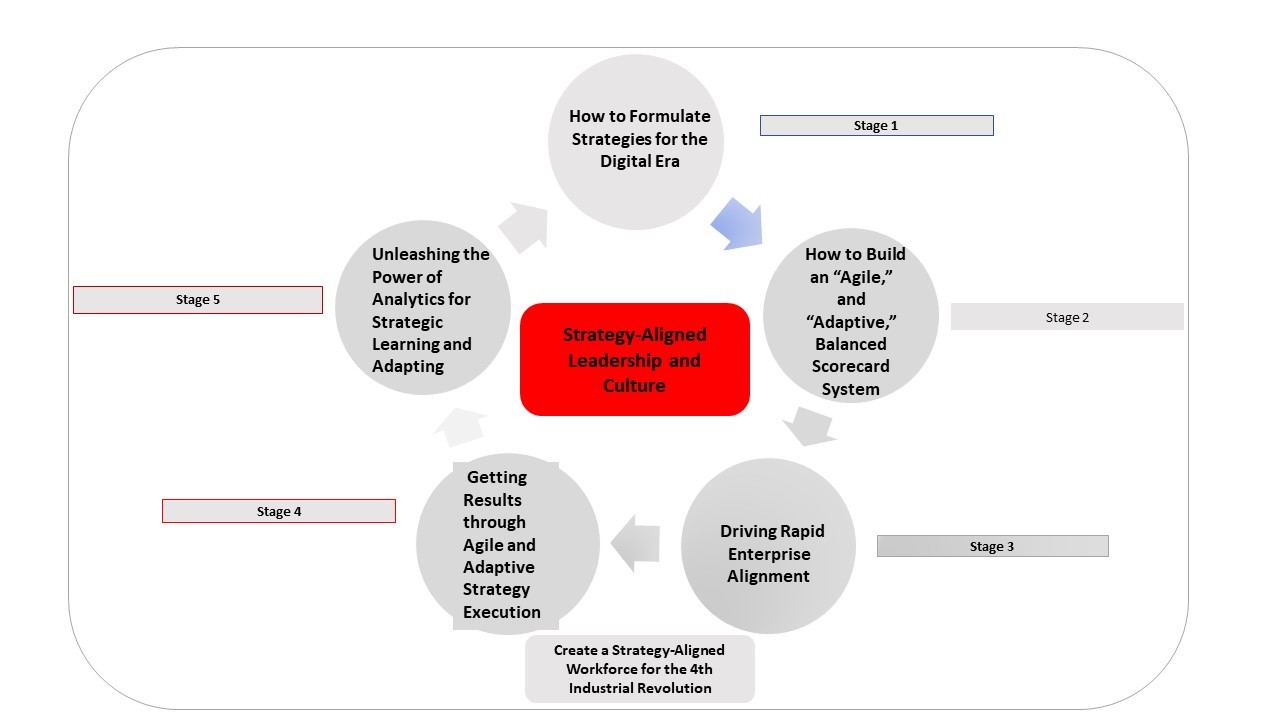People are loyal to culture, not strategy
Of all the clichés that pepper the managerial lexicon, perhaps none rolls off the tongue more readily and regularly than Peter Drucker’s, “culture eats strategy for breakfast.” It seems that the authors of just about all the articles, blogs, etc., that consider culture and strategy together are honour bound to include this. It’s as if it would be disrespectful not to.
Yet despite its frequent usage, the saying is still powerful and useful. It alludes to the truism that whereas strategy formulation and planning are essentially straightforward processes or tasks that can be described, documented, and completed, executing strategies is something significantly much more complex. And perhaps the largest contributor to that complexity is culture, which is why we have placed it (along with Leadership) at the centre of our Agile and Adaptive Model for Strategy Execution.
Using a cultural assessment tool
A cultural assessment can provide early warning signs of cultural barriers to strategy execution.
Senior managers must have a starting point for change, a place where they have undertaken the required analysis to understand the current strengths and weakness of the culture. This will provide a gap analysis from where they are today to where they want to be in the future.
Cultural Change Agenda
To begin the process, we recommend developing a Cultural Change Agenda, delineating the current and desired states for dimensions such as leadership behaviour, information flows, decision-rights, etc.
This should be supported by an assessment of the strategic cultural dimensions (the current state). A powerful way to do this is through an online cultural assessment tool, which can be arranged according to the identified cultural dimensions and will reveal the areas where improvement is needed enterprise-wide or at departmental levels. Closing this cultural gap should then become a key initiative in fashioning a strategy-aligned culture.
Online cultural assessment
In recent years, a number of useful online cultural assessment tools have been developed. These have evolved significantly since the first generation of the 1990s, which simply enabled answers to questions, to be followed by manual analysis. Today’s generation makes use of advanced data analytics to show correlations, predict targeted improvements, etc.
Through such instruments, answers to a series of questions assess the cultural reality against the behaviours, etc., required to deliver the strategy. If a customer-centric strategy is being implemented, questions might include, “In my department, we regularly talk about emerging customer needs,” or “we are empowered to make the right decisions for customers without seeking approval.” For innovation, questions might be, “In my department, we regularly set aside time to brainstorm new ideas,” or “we are free to experiment with new solutions without fear of failure.”
A cultural assessment instrument can help identify dysfunctional behaviours and processes that are performance bottlenecks deep inside, and across the enterprise.
Case example
Culture surveys can provide particularly powerful insights when correlated with other data. A couple of years back, one of the authors was involved in shaping and managing a series of online surveys that for each of 16 departments looked at employee engagement and the satisfaction of internal customers. What was striking about the findings was that the ranking for employee engagement was almost identical for internal customer satisfaction. The top performer for both, and by some distance, was the same department.
What was striking about the findings was that the ranking for employee engagement was almost identical for internal customer satisfaction.
Interestingly, one department that had scored near or at the bottom of each ranking on two subsequent surveys improved significantly when the next survey was conducted (indeed moved into the top half of 16 departments). What was clear from the analysis was that there was a significant leadership issue.
Reshaping the management team and replacing it with one that was much more empowering and trusting led to a massive change in the culture and performance of the department (and without replacing any of the staff) and the corresponding employee engagement and internal customer satisfaction scores. Validation, if you will, that the more impactful way to improve the customer experience is to ensure a great employee experience – and this is extremely cultural.
Want to continue your journey to successfully uniting your organization with its strategic goals? Download your copy of this guide to discover the key to delivering transformation in your organization:
____________________________________________________________________________________________________________
Extracted and abridged from Strategy Management in the Digital Age: How Dynamic Balanced Scorecards Transform Decision Making, Speed and Effectiveness, David Wiraeus and James Creelman (Foreword by Dr David Norton), Palgrave MacMillan, August 2018.


Comments
No comments currently.